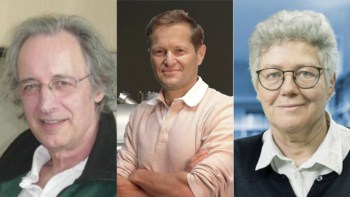Two physicists in the US have made a motion sensor that can detect movements as small as a thousandth of a nanometre. The sensor combines a nanoelectromechanical bridge and a single-electron transistor, and could be used in applications where ultrahigh precision is essential, such as magnetic resonance microscopy. And if the sensitivity of the device could be improved by a factor of 100 it would be possible to detect quantum effects in a macroscopic system (R Knobel and A Cleland 2003 Nature 424 291) .

The uncertainty principle states that we cannot know both the position and velocity of a quantum particle at the same time, thus placing a fundamental limit of the possible accuracy of any measurement. However, extremely precise measurements would be needed to observe these limits in a macroscopic object. Nanoelectromechanical devices might be able to make such measurements. In these devices a mechanical element moves in response to an external force, and a highly sensitive detector is used to record the displacement of the mechanical element.
Robert Knobel and Andrew Cleland of the University of California at Santa Barbara have built a device in which the mechanical element is a beam made from gallium arsenide that is fixed at both ends. The beam is about 3 microns long, 250 nanometres wide and 200 nanometres thick. Knobel and Cleland positioned the beam about 250 nanometres from a single-electron transistor – the ‘detector’ – and coupled the two together via a capacitor. They then applied a voltage to make the beam vibrate.
As the beam moves towards the detector, and then away from it, the amount of current flowing through the transistor changes. “The single-electron transistor is the world’s best sensor of charge, with a sensitivity of about one millionth of an electron,” Cleland told PhysicsWeb. “By measuring the current through the transistor, we can measure the vibration of the beam,” added Knobel. “Our result shows a clear path by which quantum-limited measurements can be made on macroscopic devices,” said Cleland. “Such a path has not been demonstrated before.”
The pair now hopes to make measurements in the quantum regime. To do this they will have to increase the sensitivity by a factor of 100 and the vibration frequency by a factor of 10.



